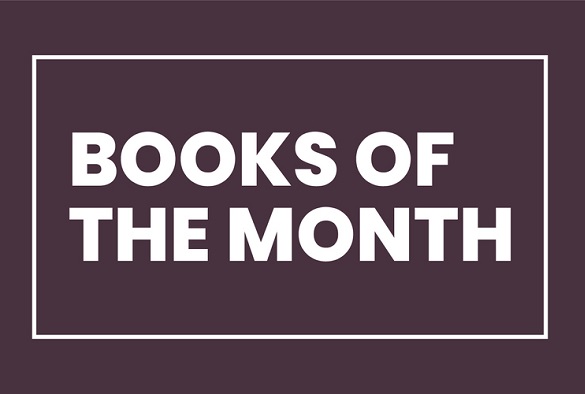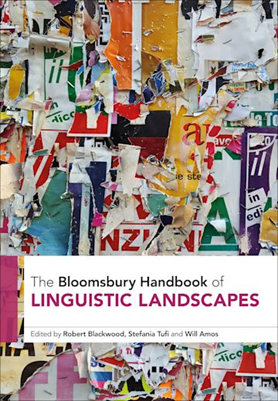
‘Books of the month’ spotlights recent releases authored by University of Liverpool staff.
If you’d like your new or recent (2023 or 2024) publication to be featured, please email the details to the Research Communications Team at rescomms@liverpool.ac.uk.
The University of Liverpool Library has curated a reading list for Book of the Month which is publicly available and searchable. The newest titles are added at the top of the list for visibility and further information can be found in the notes area.
June’s Books of the Month

By Marco Iuliano and Martino Stierli
Published – March 2024
- Based on in-depth interviews with the authors, this is the first time the photographer discusses her work as a whole, in terms of recurring themes, techniques and how it is evolving
- The book includes more than 170 photographs – many published for the first time – carefully selected in dialogues between Binet and the authors to represent the full scope of her work and her personal interests
Over a period of forty years, Hélène Binet has photographed both contemporary and historical architecture – this is the complete monograph of her work, with two extensive critical essays.
Marco Iuliano details Hélène Binet’s background, from her childhood in the Italian fishing village of Sperlonga and in Rome, through her early ‘discovery’ of architectural photographer Lucien Hervé, to other significant influences, like the collaborations with Daniel Libeskind, John Hejduk and the connections at the Architectural Association (AA) in London where she met Zaha Hadid.
The essay highlights in detail Binet’s approach to photography, her process and archive.
Martino Stierli sets Binet’s work within the conceptual framework of architectural photography, discussing whether an architectural photograph is an inventory of a building or space, a translation into a two-dimensional image or, rather, an image in its own right; an artifact that loosely relates to the original object or phenomenon. Within this context, Stierli argues that Binet’s oeuvre seems to oscillate between two obsessions: a desire to translate spatial phenomena into the two-dimensional space of the image and a quest to articulate the modulation of light on a surface.
The two essays are followed by a catalogue of Binet’s work, which is framed within a series of her recurring themes emerged through dialogues between the authors and the photographer.

Advanced Introduction to Victimology
Published: July 2023
Elgar Advanced Introductions are stimulating and thoughtful introductions to major fields in the social sciences, business and law, expertly written by the world’s leading scholars. Designed to be accessible yet rigorous, they offer concise and lucid surveys of the substantive and policy issues associated with discrete subject areas.
This Advanced Introduction charts the growth and development of victimology since the Second World War. Exploring competing theoretical perspectives, data sources, and policy emphases, it presents a critical overview of the field and suggests future directions of travel for researchers. Topics covered include trauma creep, witnessing pain, gaining knowledge of suffering, compensation, the role of offenders, and victim-centred justice.
Key Features:
- Discusses victimology in its historical context
- Considers the ethical dilemmas of studying victimisation and suffering
- Adopts a global outlook, incorporating perspectives from the Global South
- Explores positivist, radical, critical, cultural, narrative, and feminist victimology
- Reviews key policy developments including restorative justice and reconciliation
Examining key concepts in victimology and placing them in their policy context, this Advanced Introduction will be essential reading for scholars and students in criminology, sociology, social policy, and criminal justice.
It will also prove a useful guide for activists and policy-makers seeking to centre victims in their work.

The Bloomsbury Handbook of Linguistic Landscapes
Robert Blackwood (Anthology Editor), Stefania Tufi (Anthology Editor), Will Amos (Anthology Editor)
Published: June 2024
Presenting a detailed examination of the origins, evolutions, and state-of-the-art of linguistic landscape research, The Bloomsbury Handbook of Linguistic Landscapes is a comprehensive guide to the burgeoning field of linguistic landscapes and the study of meaning and interpretation in public spaces and settings.
Providing a thorough synopsis of the theories, methodologies, and objects of study which inflect linguistic landscape research across the world, this book is the ideal companion for both new and experienced readers interested in the processes of communication in public spaces across diverse settings and from a broad range of perspectives. Through a wide selection of case studies and original research, the handbook highlights the global reach of linguistic landscape theories and practices.
Scrutinising an array of qualitative, quantitative, and mixed methodological approaches for analysing a wide spectrum of meaning-making phenomena, it investigates semiosis in contexts ranging from graffiti and street signs to tattoos and literature, visible across a variety of sites, including city centres, rural settings, schools, protest marches, museums, war-torn landscapes, and the internet.